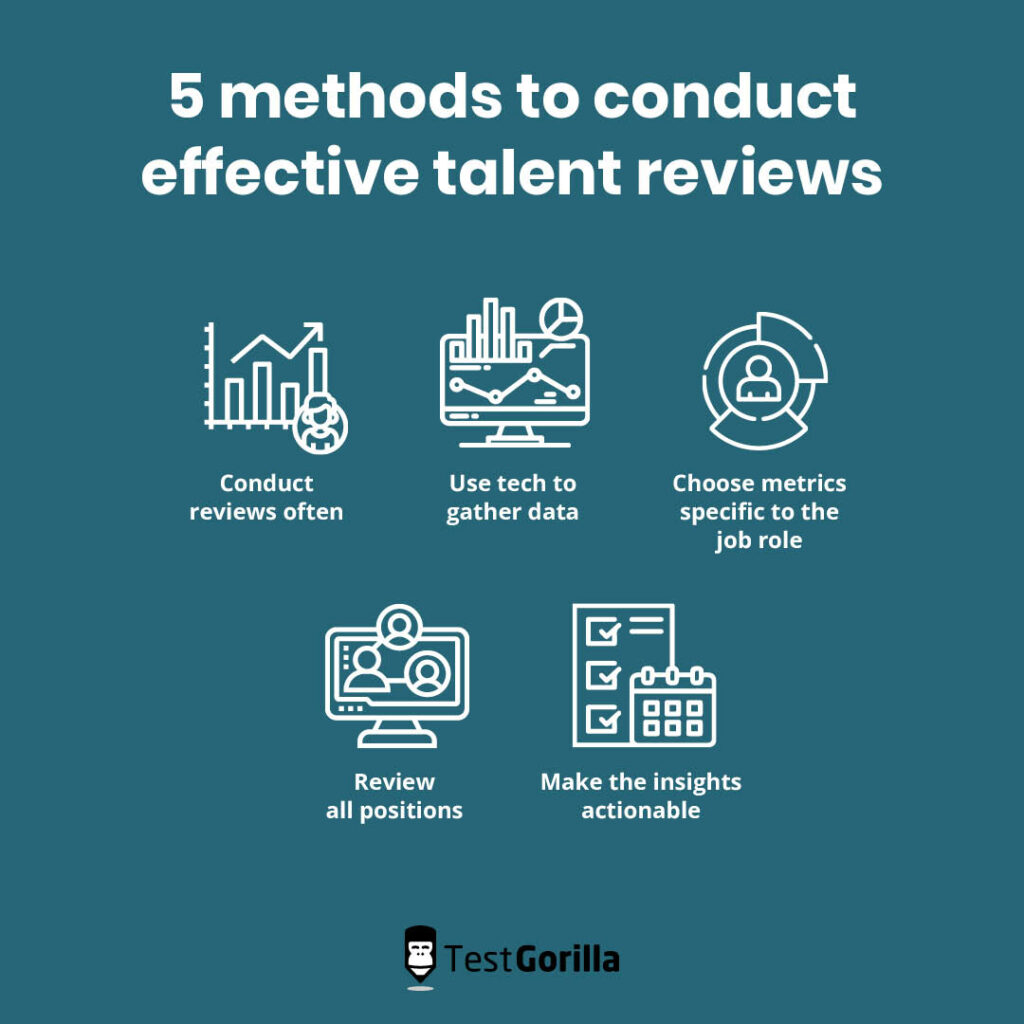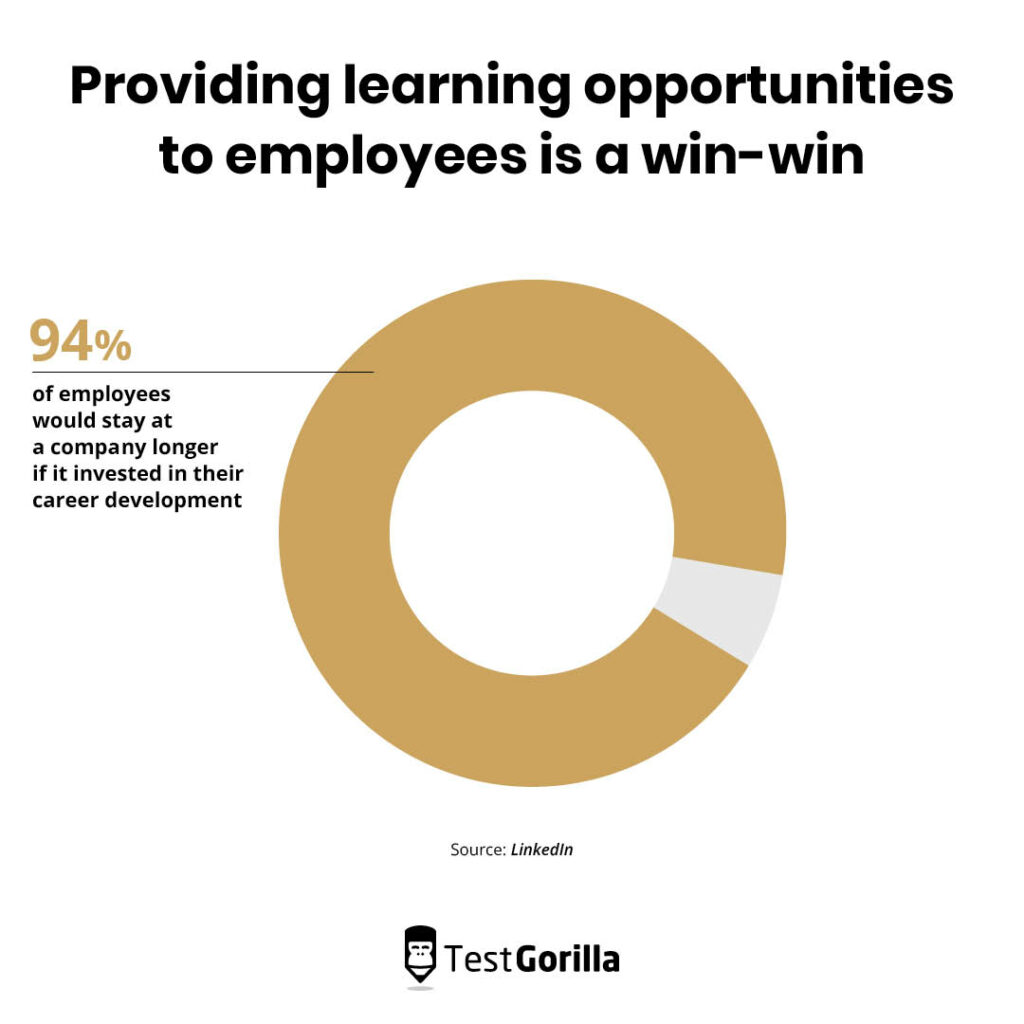Employers: How to conduct effective talent reviews
Talent reviews can be helpful if you need to assess your employees’ abilities, especially if you’re looking for employees with the right leadership and people management skills to become the next generation of leaders for your organization. However, there are elements that you need to get right to make the most of talent reviews.
That’s why we’ll go over the five methods that you need to use to ensure that you conduct talent reviews effectively. But first, we’ll define what talent reviews actually are.
What is a talent review?
A talent review is a process that involves reviewing the current performance and future potential of your company’s employees. The goal of a talent review is to assess your workforce and find people who can fill critical roles in the future.
You can use talent reviews to pinpoint talent that can fill essential roles if an employee leaves or retires. Being prepared for such situations is crucial: Almost 90% of executives and managers have reported that they either already have skills gaps in their organizations or expect to face them within the next five years.
It’s important to differentiate a talent review from a performance review since they serve different functions.
A performance review is a process in which a manager goes over a specific employee’s performance over a given period of time to identify strengths, weaknesses, and goals. A talent review also analyzes employees’ previous performance but focuses more on the future and employees’ potential for filling other important roles.
With that in mind, let’s dive into how you can conduct effective talent reviews.
5 methods to conduct effective talent reviews
There are five methods you should use to ensure you perform talent reviews correctly.
1. Conduct reviews often
You shouldn’t treat talent reviews like traditional performance reviews that are only conducted once a year.
Your leadership team should perform talent reviews fairly often as part of your overall talent strategy. This will enable you to analyze employees’ potential and decide which ones should get additional training and coaching to be ready to take open positions in the future.
Talent reviews should be a dynamic process. Conduct them often, especially at key times, like when you’re expecting a reduction in your workforce and need to ensure that your operations won’t suffer.
2. Use tech to gather data
Conducting a comprehensive talent review isn’t something you can do in an hour or two – it could take an unrealistic amount of time for your leaders to complete it all manually.
That’s why you should use tech to gather data on your employees. You don’t want to spend 50 hours gathering information about your talent; your time would be better spent reviewing that data and deciding which employees should receive additional coaching, training, and mentoring to prepare them for future roles.
So spend more time analyzing data and less time gathering data; use technologies like skills assessments to reduce the workload.
3. Don’t use the nine-box grid – choose metrics specific to the job role
The nine-box grid is a well-known succession planning matrix. It’s a grid that has two axes, one for performance and the other for potential. Both axes are divided into three levels: poor, moderate, and high.
The purpose of this tool is to find employees who are in box 2 (moderate performance, high potential) or box 1 (high performance, high potential) and focus on creating future leaders out of them.
The problem with the nine-box grid is defining what makes someone a high or low performer or a high- or low-potential employee. The model is too constraining and general to enable you to accurately analyze your employees and determine who is best suited for leadership roles.
It’s better to create your own metrics for assessing your employees’ potential. Write down your company’s criteria, and clearly define the crucial abilities, nice-to-have skills, and characteristics needed for a specific role.
A job description template can help you get started with defining the skills required for a given position. This will make it easier to determine an employee’s suitability for that role.
4. Review all positions
Companies can fall into the trap of only conducting talent reviews for senior positions. But to get the most value out of talent reviews, you should do them for all relevant positions in your organization. You may be able to build someone up from a junior position to a leader in just a couple of years.
Providing opportunities to junior employees who want to learn and develop themselves is a win-win situation. A survey by LinkedIn found that 94% of employees would stay at a company longer if it invested in their career development.
And by helping build up their skill set, you can prepare them to lead parts of your organization.
On the other hand, if you don’t provide these opportunities to your junior employees, they might leave to find other companies that will.
Talent reviews can be a powerful tool when you use them for all of your important positions.
5. Make the insights actionable
The last method you should use to ensure you conduct effective talent reviews is to make them actionable.
The talent review process isn’t finished when the leadership meeting is done but rather when the insights and decisions have been implemented. Finding your most talented employees is only the first step. Next, you need to create a development plan for them.
You should develop your employees, give them more opportunities, provide better management for them, and communicate with their managers about the roles you’re expecting them to take on in your organization in the future.
Providing leadership courses and dedicated mentors and coaches is a good starting point. You need to be patient and expect a longer learning curve. However, in a couple of years, you will have developed leaders who are ready to take your company to the next level.
The best insights on HR and recruitment, delivered to your inbox.
Biweekly updates. No spam. Unsubscribe any time.
The science and art of effective talent reviews
Talent reviews are a valuable tool, and it’s up to you to use them effectively. The methods we discussed above should help you understand what it takes to conduct your talent reviews correctly.
A great way to learn more about your employees’ current abilities is to give them assessments. Take a look through TestGorilla’s test library to choose from hundreds of scientifically created tests that will provide objective and bias-free evaluations of your employees.
For example, you can use our Business Judgment test to assess employees’ business sense and ability to make sound judgment calls.
Don’t leave your talent review process to chance; use TestGorilla to ensure that you get the most out of your talent.
Related posts
You've scrolled this far
Why not try TestGorilla for free, and see what happens when you put skills first.
















